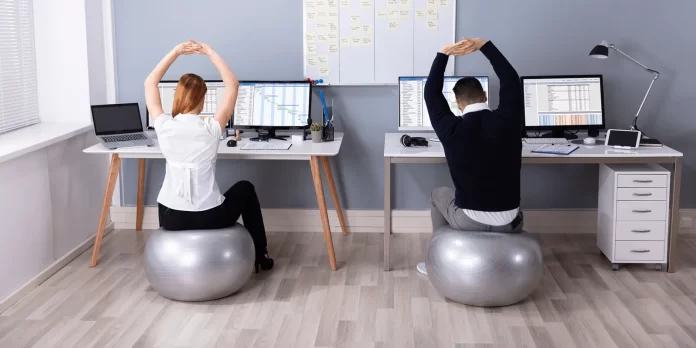Convergence of health and productivity transcends being merely a business trend; it’s a fundamental necessity. As a pivotal element that connects well-being with efficiency and performance, ergonomic excellence in workplace design is gaining prominence.
Ergonomic furniture for greater comfort and productivity in the office
The office is no longer just a place to work, but a dynamic environment that seeks to balance comfort and productivity.
Ergonomic furniture plays a key role in this transformation, emphasising designs that adapt to the body’s natural posture to minimise discomfort and increase efficiency.
For example, ergonomic chairs with adjustable lumbar support, armrests and seat depths cater to different body types and ensure that employees can maintain a comfortable and healthy posture throughout the working day.
Beyond seating, ergonomic furniture extends to other office equipment designed with human physiology in mind. Keyboard trays and monitor arms, for example, can be adjusted to the optimum distance and angle to reduce eye, neck and wrist strain.
In addition, a standing desk is known for the benefit in promoting movement and circulation, often with features such as adjustable height settings and even treadmill or bicycle options for those looking to incorporate light exercise into their work routine.
The importance of lighting in the workplace
Lighting, often overlooked as a purely functional component of workplace design, has a profound impact on both the wellbeing and effectiveness of individuals in a working environment.
The spectrum of its influence ranges from the physiological to the psychological, shaping the way tasks are performed and experienced.
Studies have shown that exposure to natural light can support circadian rhythms, improving sleep quality and, as a result, daily alertness and performance.
Conversely, poor lighting can lead to eye strain, headaches and fatigue, reducing overall productivity and health. Detail-oriented design goes beyond simply providing lighting; it considers the quality, source and type of light in relation to the specific tasks at hand.
Several factors come into play when designing an optimally lit workspace. Task lighting, for example, is tailored to specific activities, providing focused light where it’s needed most, such as at a desk for paperwork or computer work.
Ambient lighting, on the other hand, contributes to the overall illumination of a space, reducing the harsh contrast between task lighting and the surroundings.
Tips for improving productivity in the workplace
The organisation of the physical workspace plays a crucial role. A clutter-free desk with essential items within easy reach reduces unnecessary distractions and time spent searching for materials, thereby streamlining the workflow.
Technology tools can be used to improve productivity. For example, using task management software provides a clear overview of tasks and deadlines, helping individuals to prioritise and manage their time effectively.
So external factors, personal strategies, are also crucial to boosting productivity in the workplace. For example, the Pomodoro Technique, which involves working in focused 25-minute sprints followed by a 5-minute break, improves concentration and prevents burnout.
Another approach is the practice of mindfulness and meditation, which has been shown to reduce stress and improve focus, indirectly contributing to higher productivity levels.
In addition, setting specific, measurable, achievable, relevant and time-bound (SMART) goals ensures that one has a clear vision and tangible targets, making the process of achieving them more structured and motivating.



